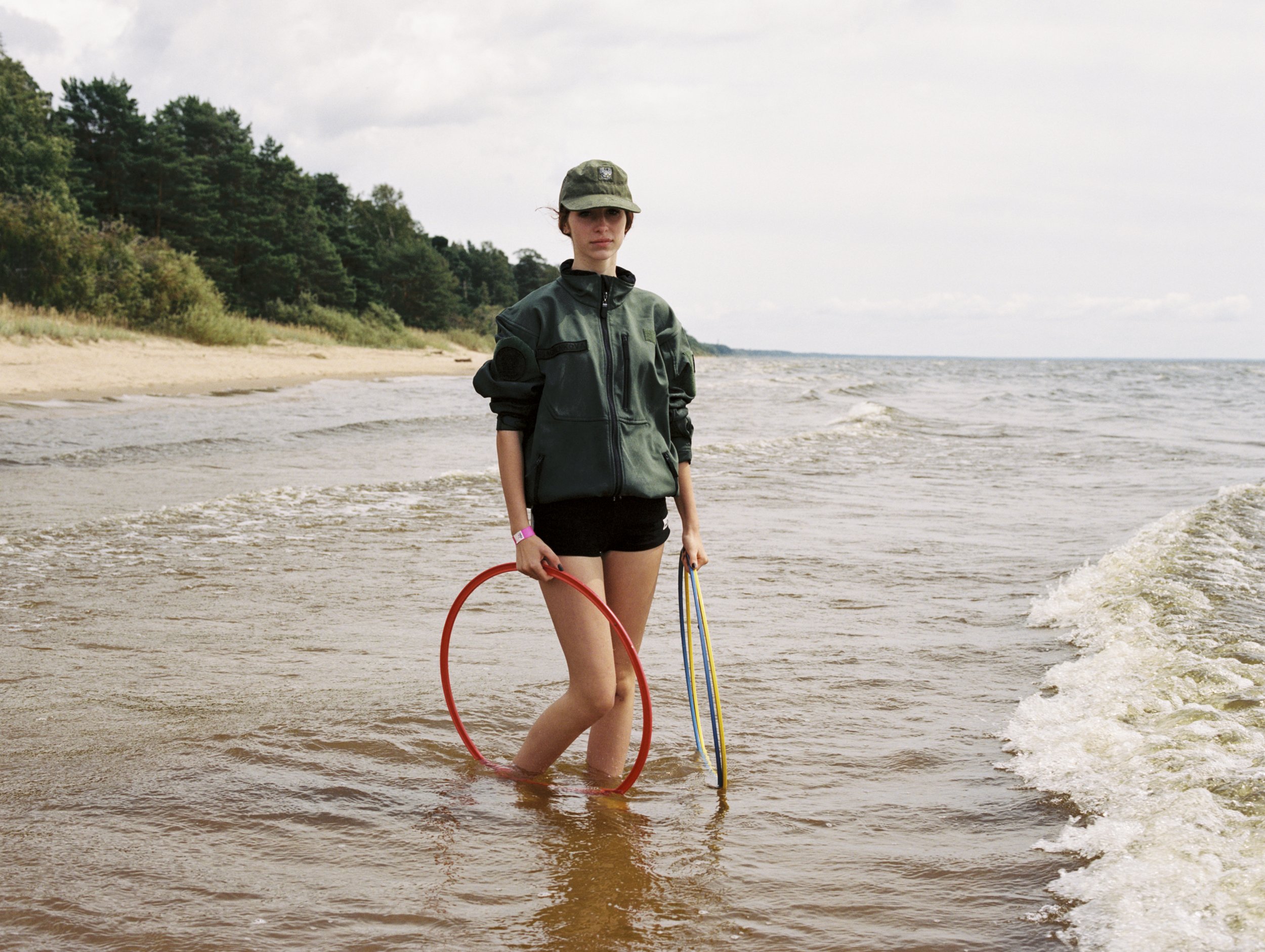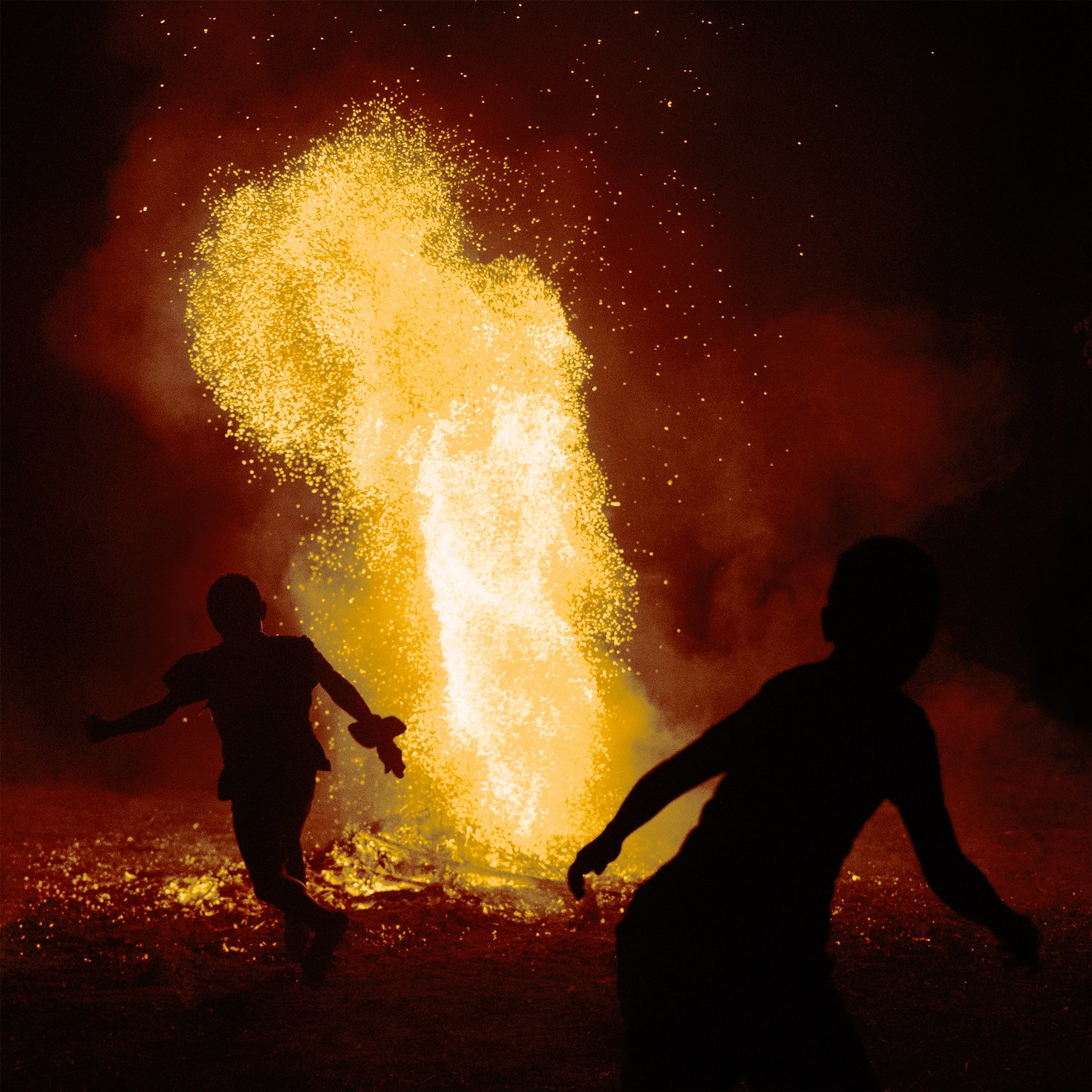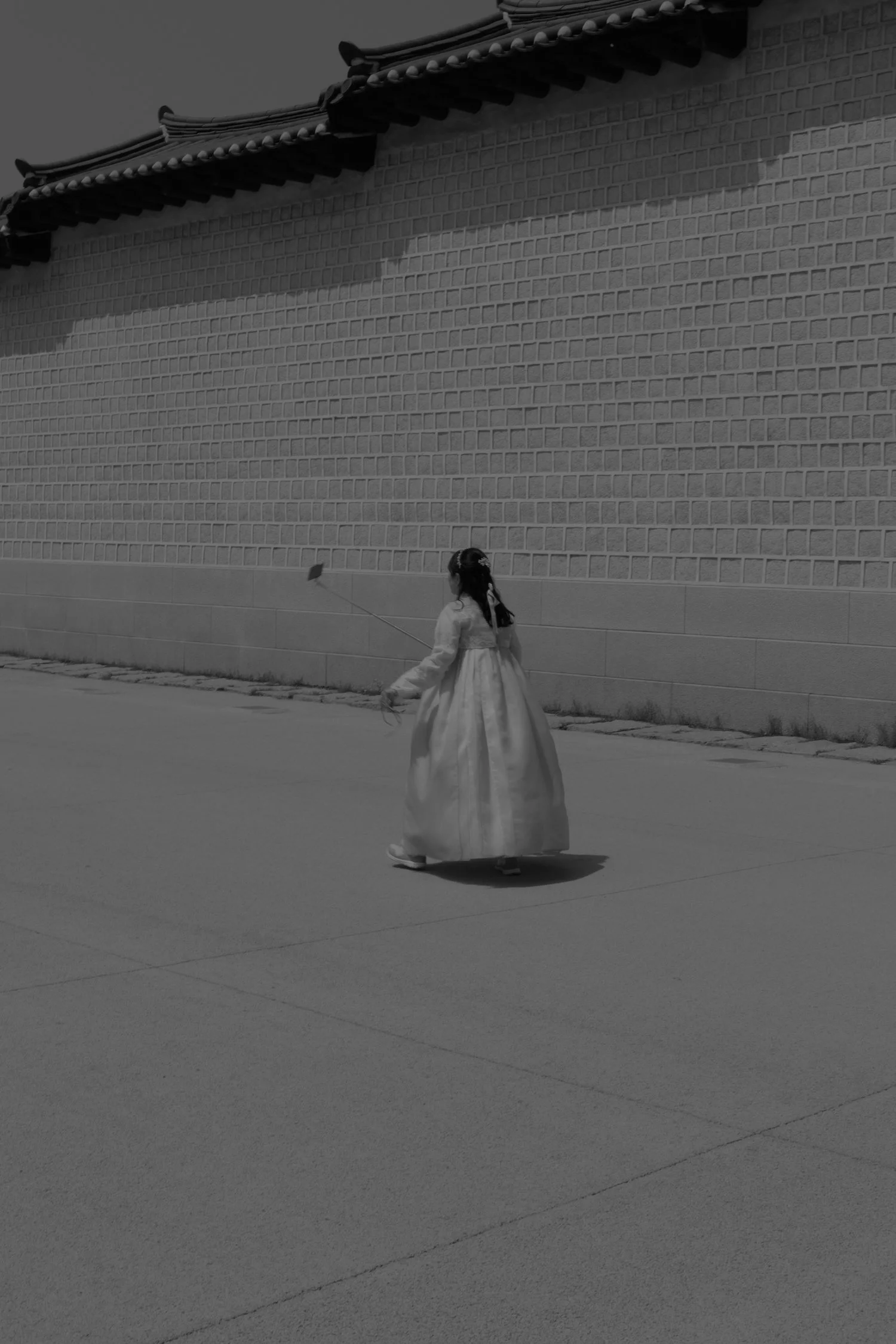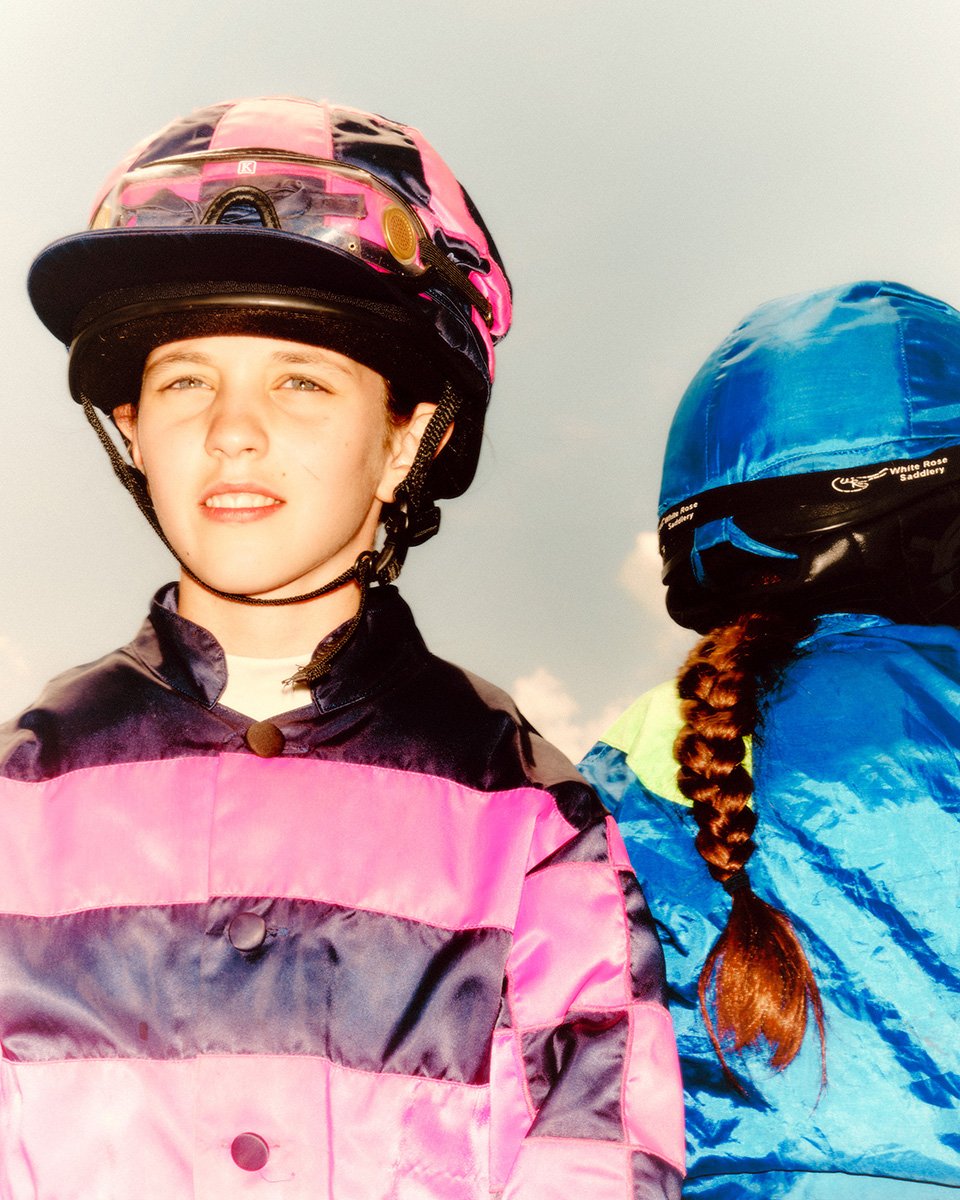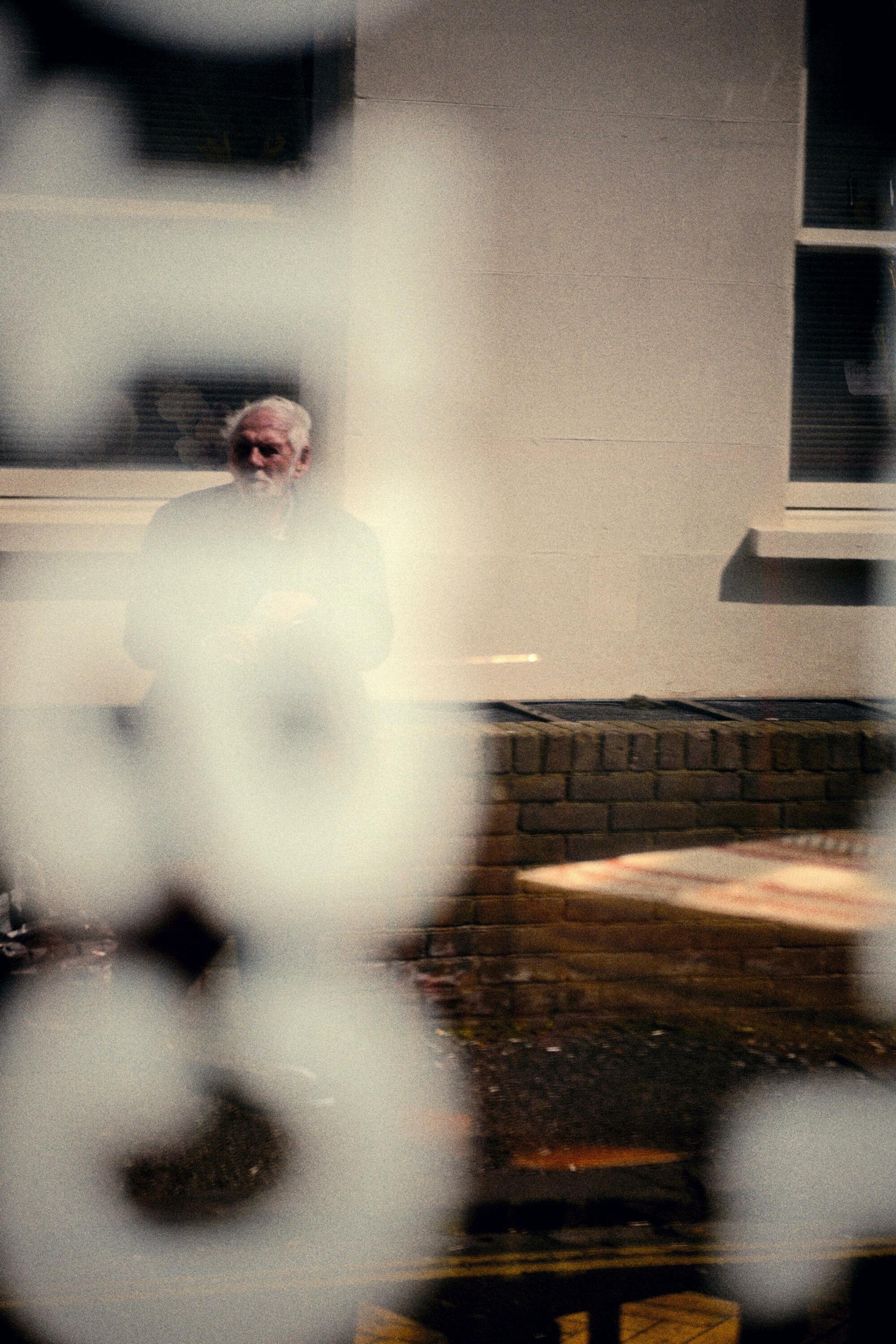Icons: Diane Arbus
Arbus’ unflinching look at the social “underworld” of 50’s and 60’s America balances between the exploitative and the revelatory, giving a platform to queer and disabled people at a time where it didn’t exist anywhere else.
Text Tom Wyche Self-portrait pregnant, 1945
“A photograph is a secret about a secret: the more it tells you, the less you know.”
Diane Arbus’ photography, focused on those she believed to be a part of the social “underworld”, has been immensely impactful as a generation’s first exposure to minorities and social groups that had existed solely out of the public’s eye. Her legacy toes the line between retroactively being seen as a figure of compassion, giving a voice to the voiceless by putting minorities on a platform otherwise unavailable to them, or contrarily as exploitative to the queer and disabled people she othered through her photography. Both positions that could be justified without a shadow of a doubt.
Five children in a common room, 1969
While her photographs themselves aren’t framed in an overtly exploitative way, with Arbus presenting her subjects in unfettered honesty, her relationship to her subjects and way of speaking of them make it difficult to ignore this almost voyeuristic quality to her photography. Publicity from her time positions her work as this circus-like parade of marginalized folk to gawk at, with an article from 1984 titled “Diane Arbus’ disturbing world”, and another describing Arbus as “scrutinizing” her subjects. Arbus herself is even quoted as saying on an attempted photographic trip to London,
"Nobody seems miserable, drunk, crippled, mad or desperate," [...] "I finally found a few vulgar things in the suburbs, but nothing sordid yet."
Two female impersonators backstage, 1961
Peaches Palmer, stripper in dressing room, 1963
Arbus’ insensitive position may come from her background, which was entirely removed from the world she eventually chose to photograph. She was born into wealth to the family that ran Russek’s, a New York chic department store. Her siblings were equally as artistically inclined as her, yet stuck to the purely professional and classically successful idea of working in the arts that Diane inevitably strayed from. This traditional path seemed suffocating to her stating:
“I hated painting and I quit right after high school because I was continually told how terrific I was,” [...] “I had the sense that if I was so terrific at it, it wasn’t worth doing.”.
Tattoed Man at a carnival, 1970
Girl in her circus costume, 1970
After being introduced to photography by her then husband, Arbus took up the medium commercially, working for Vogue and Harper’s Bazaar to notable success. Yet unsurprisingly, she became disillusioned with how suffocating this traditional path felt to her, her husband feeling a similar strain that in conjunction with Arbus’ depressive episodes led to their divorce. At this point, she began to explore the idea of shooting subjects that were actually engaging to her, and not the slew of models that represented the ostentatious life she’d been stuck with up until this point. This is when she began photographing the groups she’s famed for. What attracted her to these communities was the fact that they’d experienced something she’d never been exposed to, what she believed (despite her certainly tumultuous personal life) was any experience of actual trauma.
“They’ve passed their test in life. Most people go through life dreading… a traumatic experience. Freaks were born with this trauma. They’re aristocrats.”
Once again, Arbus’ relation to the communities she shot should certainly be questioned. This is especially considering her epiphany was realised in wanting to photograph “what is evil”. One could clearly either take this as bluntly as it was initially said or, as her daughter interprets her quote, “She was determined to reveal what others had been taught to turn their backs on.” Regardless of how cynical one is of whether or not she photographed these minorities in good faith, Arbus certainly felt distanced from them, and that’s what drew her towards them.
Three transvestites in evening dress at a lounge, 1961
Simultaneously, the fact these minorities were visible in any light during the ‘50s and ‘60s cannot be understated, especially considering the size of audience that Arbus eventually harboured. Arbus’ work came at a time when American society had just only begun to become comfortable with even the acknowledged presence of the groups she depicted. Arbus shot sex workers, disabled people and openly queer people, beginning to do so in early 1956 far before the liberative photography that followed decades after. The fact that Arbus therefore facilitated representation on a national scale must be acknowledged, even if not praised.
Girl with a cigar in Washington square park, 1965
As mentioned before, the photos themselves don’t subjugate or belittle those featured, even if the artist behind the work possibly may. She frames her subjects in an extraordinarily neutral light, shooting them in comfortable settings and unbiased perspective, almost as if to purely remark that these people are objectively human, and that the audience must do with that information what they will. While that is a particularly low bar for positive representation, as stated previously it was a great step forward over what had existed before it.
Identical Twins, 1967
Bishop by the sea, 1964
Lady Bartender at home with a souvenir dog, 1964
“I hear myself saying, ‘How terrific.’ . . . I don’t mean I wish I looked like that. I don’t mean I wish my children looked like that. I don’t mean in my private life I want to kiss you. But I mean that’s amazingly, undeniably something.”
Maybe Arbus’ work was accepted because it was taken by an outsider, from an external anthropologist documenting the “aberrations” of society without being considered an aberration herself. As a result she avoids this notion of sexual deviancy that had attached itself to many queer photographers she predated like Robert Mapplethorpe, who were seen alternately to be promoting impure and unsanctified lifestyles through their photography of people like themselves.
Untitled
New York Skyline in a lobby, St Petersburg. Fla. 1971
Arbus was instead seen to be merely recording what existed. As a result, discussions and distribution of Arbus work weren’t anywhere near as controversial as others covering the same subjects, allowing her honest depictions of queer people to be exposed to audiences that a marginalised photographer themselves could never have been allowed to reach. In this regard, even if her intentions were wrong or inconsiderate, the total impact her work had should possibly still be celebrated.
About Diane Arbus
Diane was born on March 14th, 1923 to the name Diane Nemerov.
Her photographic career began in her 20’s, and she branched out into her distinctive style in her early 30’s. She passed away at 48 after taking her own life in 1971.
Arbus was awarded a fellowship to the Guggenheim foundation in both 1963 and 1966 for her proposal “American Rites, Manners and Customs.”
If you want to find out more about Arbus, take a look at her page on the aforementioned Guggenheim foundation.














